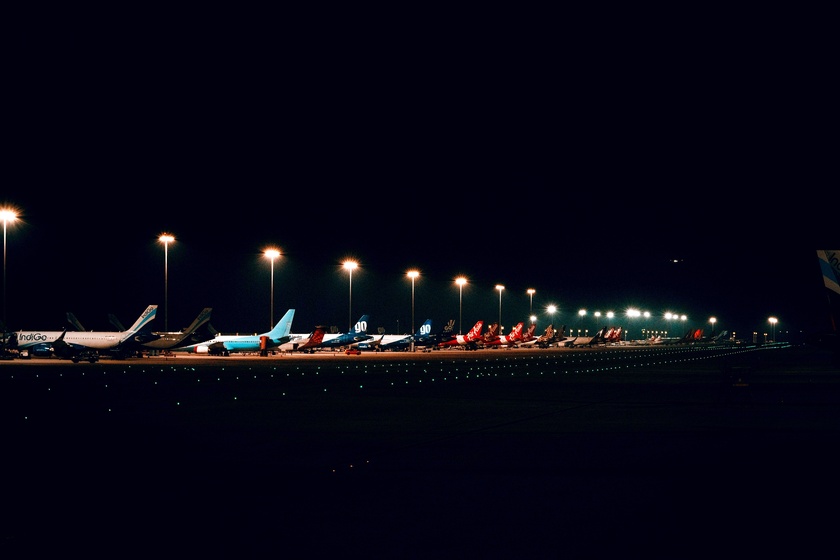
For well over a year in this newsletter series we’ve been talking about a coming recession for the US economy, and by extension other economies around the world. In fact, we’ve sometimes explicitly stated that when you dig deep beneath the numbers we are already in a recession. The question is: What if we are already in a recession but certain activities in the market space and the numbers that we are seeing are hiding this fact?
This is exactly what we believe. We might hear about positive Gross Domestic Product (GDP) numbers and think that this is a good thing. We would like to remind our readers that government spending is also a part of GDP. Here’s another question: What if the private sector is in a recession and government spending is increasing to offset those recessionary pressures in the private sector, would that not still lead to the GDP being positive?
We believe this is exactly what’s happening. Even with the “strong labor market“ – which is merely a factor of high-paying high-quality jobs reducing, and low-paying low-quality jobs increasing – the economy is in a recession. What is really happening is that the government spending through what some believe is massive money printing – which is inflationary – is leading some to believe that we are not in a recession.
Now. Here’s the problem for the aviation industry. Our industry is extremely sensitive and somewhat fragile with relation to economic challenges. If there is a private sector recession, then the aviation industry will start feeling the pressures very soon, if it has not already begun to feel those pressures.
In this week's full article, we will share some insights into what is undoubtedly shaping up to be a private-sector recession that seems to be unfolding in the shadows.
For related readings, please see also: ‘3 Ways Aviation Businesses Are Coping With Inflation’, ‘The Aviation Industry and Economic Uncertainties’, ‘Inflation: Higher costs and their effects on Flight Schools’, ‘High Interest Rates/Cost of Borrowing and Their Effects on Aviation Businesses’,’Debt: Its effects on the Aviation Industry’, ‘Economic Crisis and the Aviation Industry’, ‘Inflation and Aviation’, ‘How The Aviation Industry Needs To Look At Inflation’, ‘The Aviation Industry Must Not Mistake A Recession’, ‘Understanding Recessions’, ‘Understanding Inflation’, ‘Money and Recessions.’, ‘Breaking Down Inflation.’ , ‘Inflation: Here we go again...’’, ‘Recession: Should we still be concerned?’, ‘Stagflation: Should the Aviation Industry be Concerned?’ ‘Aviation: Producer and Consumer Prices’, ‘Aviation: Are We In BIG Trouble?’, ‘Aviation: Recession Red Flags?’, ‘Aviation, Pay Attention To The ‘Canary In The Coal Mine’’, ‘The Canaries 'Banks’ Are Dying.’, ‘Aviation: Inflation, Again…’, ‘Aviation; Should We Be Concerned About The Fed’s Actions?’, and ‘Aviation; Inflation ‘Slowed’, So Why Are Prices Still High?’
Allow me to explain why we have not seen a recession yet despite the collapse in base money supply. We are witnessing the stealth nationalization of the economy. What does this mean?
The entire burden of the monetary collapse and rate hikes is falling on the shoulders of families and small businesses, while large corporations and governments are virtually unaffected.
Thus, when an agent like the state, which weighs 40 to 60 percent of GDP in most economies, continues to consume wealth and spend, gross domestic product does not show a recession even though consumption and private investment in real terms is declining. Bloated government spending is disguising a private sector recession and the decline in real disposable income, real wages, and margins of SMEs (small and medium enterprises). Furthermore, the accidental and exogenous factor of widespread weaker commodities is boosting the external contribution of gross domestic product.
These are the main reasons why we are living in the middle of a recession and the destruction of private wealth and wages, but the official data does not reflect it. As government weight in the economy rises faster, technical recessions may not appear in the official data, but citizens suffer it, nevertheless. The reader may think that this is good news because the spending of governments goes straight to the citizens via social spending. However, there is nothing that the state provides that it does not take away from the private sector now or in the future -deficit spending now means higher taxes and lower real wages afterward. Therefore, the flip side of “no official recession yet” is “more public debt now and after”.
The rapid decline in global money supply is staggering, at -3,4% at the end of the first quarter according to Longview. Meanwhile, in the United States, the money supply is also contracting at the fastest pace since the great recession. Consider that, in the same period, government indebtedness at a global level is up 3% and United States borrowing has also risen faster than real GDP, according to the IIF. And those deficits are financed even if the cost is higher. Governments do not care about rising borrowing costs, because you pay for it.
This all basically means a drain of liquidity for the private sector will continue for a prolonged period. Central banks scratch their heads, wondering why inflation remains persistent despite the complete reversal of the supply chain disruptions and the roundtrip of the international prices of commodities, so they keep hiking rates which have a direct negative impact on families and SMEs. Large corporations have no significant problem with higher rates, as they can access credit without any problem, finance themselves at better rates than many sovereigns, and most are swimming in cash after years of prudent balance sheet management. Some may go bust, but this is not a monetary tightening that will affect the mega caps in most cases.
So why does inflation, especially core CPI, not react faster to rate hikes? Because the largest economic agent in the economy does not care and is not reducing its imbalances. Bloated governments are consuming even more units of newly created money and that is why aggregate prices fail to reflect the price contraction of external factors like freight or energy. Furthermore, as we have seen in the gross domestic product figures of many European nations, the rents components of GDP show a massive increase in the tax rents side, while gross added value of businesses and the gross wage component remains below pre-pandemic levels. Congratulations, you wanted socialism, this is socialism: Lower real wages, lower real disposable income, and lower real savings.
With the current slump in money supply, inflation should be half what it is now, and this is even considering the tweaks in the official calculation of CPI. However, money velocity is not declining because state consumption of newly created currency units is rising despite poor real private consumption and investment. If we think of the quantitative theory of money, this may be the first private-only recession because money supply declines and money velocity growth coming from the public sector offsets it.
I am writing this column from Argentina, which is suffering a 108 percent inflation. The problem when government spending ignores any monetary tightening is that the second leg up of inflation comes from even higher state subsidies using new units of currency, and the downward spiral may start and become impossible to stop. As the interest rate and credit access of the backbone of the economy, households, and SMEs, gets worse and dries up, governments step in to solve a problem they caused by creating even more entitlement and subsidy expenditures with constantly depreciated units of currency. Of course, the U.S. and developed economies are still far from the insanity of Argentina’s 1,670 percent increase in base money (M2) in the past ten years but remember that “once you pop you cannot stop”.
The money supply slump and rate hike path so far are destroying the backbone of the economy, families, and small businesses. Normalization of monetary policy without normalization of government spending and deficits is the recipe for stagnation.
Originally published at dlacalle.com
_________________
Author:
Daniel Lacalle,
Daniel Lacalle, PhD, economist and fund manager, is the author of the bestselling books Freedom or Equality (2020), Escape from the Central Bank Trap (2017), The Energy World Is Flat (2015), and Life in the Financial Markets (2014).
_____________________
This article was published on the Mises Wire on July 1, 2023, with the title “Why the Official Data Shows There's No Recession” The views expressed are the author’s, and do not constitute an endorsement by or necessarily represent the views of On Aviation™ or its affiliates.
Thank you for reading this week's On Aviation™ full article. Do you believe that the private sector is already in a recession? Please share your thoughts in the comments below. Remember to check out our On Aviation™ Podcast and continue the conversation on our Twitter and Instagram.
Orlando - On Aviation™

















